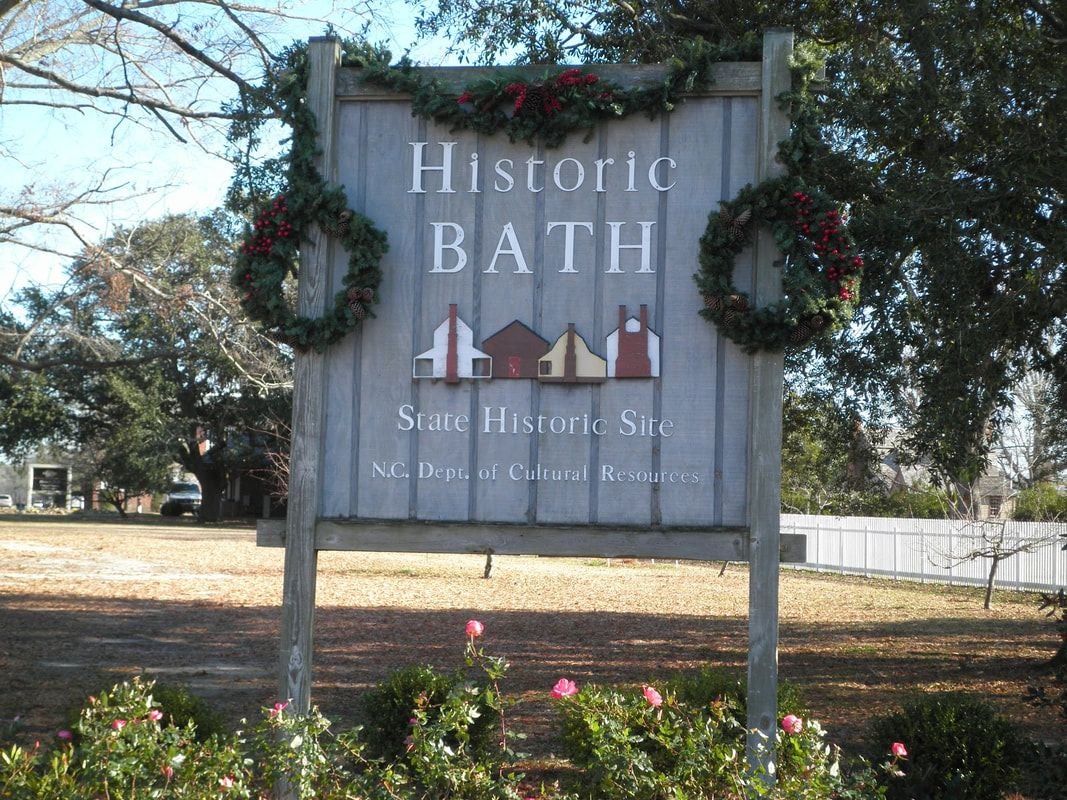Historic Bath Foundation close to realizing founding goal
Published 7:06 pm Wednesday, September 21, 2016

- AREA ARTIFACT: This belt buckle came from the Queen Anne’s Revenge, the pirate Blackbeard’s ship. When the Bath museum opens in spring of 2018, it will open with a four-month exhibit of items salvaged from the ship.
BATH — North Carolina’s oldest town will soon have a place to display more than 300 years of its history.
The creation of the future museum, to be housed in the northwest wing of the old Bath High School, was announced Sunday by Historic Bath Foundation and the North Carolina Department of Cultural Resources’ Division of State Historic Sites and Properties.
“The museum has long been a dream of the Historic Bath Foundation, which was set up in 1999 to provide funding for a museum, to aid the state historic site and to help preserve and protect the state’s oldest town,” HBF President Surry Everett wrote in a statement.
The first floor of the museum will be opened in the spring of 2018, according to Gene Roberts, HBF vice president. The timing of the museum’s opening corresponds to an important piece of Bath’s history, Roberts said.
“This is to observe the 300th anniversary of Blackbeard’s connection with Bath. That was the year he was in and out of Bath. It was also the year he was killed, and his head was brought back to Bath,” Roberts said.
The museum will open with a four-month visiting collection of Blackbeard relics from the pirate’s ship, Queen Anne’s Revenge. After a second phase of the museum — the wing’s second floor — is opened for a permanent exhibit in 2020, Blackbeard-related artifacts will be rotated through that collection, Roberts said.
Keith A. Hardison, director of the Division of State Historic Sites and Properties, attended Sunday’s gathering and spoke about how the existing Historic Bath State Historic Site visitors center was originally designed to include exhibit space, but when the center was built, the budget could not afford additional space. When Bath High School Preservation, the nonprofit responsible for saving the old Bath High School from demolition and now restoring the building for multiple uses, offered HBF the northwest wing, HBF took a proposal to the state.
“We are delighted to accept it. We are excited about this project and feel that the timing is right for both our agency and Bath,” Hardison wrote in a letter responding to HBF’s proposal.
The condition is that HBF pay for renovations, and if the space is, at some future point, not used a museum, it will revert back to BHSP, Roberts said. The state agency will be providing exhibit items.
“The value of the exhibit will easily exceed $200,000,” Hardison wrote.
Roberts said the project is expected to cost approximately $1 million, of which the foundation has already raised a little less than half. That equates to roughly 3/4 of the cost of first floor renovations, he said.
In the course of raising money for a museum, HBF also has collected museum-worthy exhibit items. One collection contains 22 original maps dating from 1540 to the end of the 18th century, including a rare map by artist and cartographer John White, that was engraved in 1590 by Theodor De Bry. In 1585, White made a voyage to the Outer Banks of North Carolina. The trip lasted 13 months, and on his return to England, White painted watercolors of the people and places he encountered in the New World. De Bry would later make engravings from White’s paintings.
According to Roberts, the map collection means the museum will have every map issued from 1709 to 1757 on which Bath appears.
“One of the maps with Bath on it is one of the first and, I think maybe, the first also showing Washington,” Roberts said.
Other collections promised to the museum include more John White illustrations of the area’s Secotan and Pomeiooc tribes’ life during the 16th century and 48 individual pieces of Canton ware, Chinese ceramic pieces imported between 1785 and the late 19th century. Many more Native American artifacts, ceramics and firearms dating from the 1500s through the Civil War also will become a part of the permanent collection, Roberts said.
“The idea is, once the museum opens, is to have continuing exhibits on the first floor until the permanent Bath exhibit is created. (Hardison) explained that while it would be a permanent exhibit, artifacts in it will change. … There will always be Blackbeard artifacts in the Bath-Pamlico exhibit, but the specific items will rotate,” Roberts said.
Roberts said the first part of renovation includes shoring up the second floor with steel beams — work expected to start this year — with the majority of construction planned for 2017.
“We ought to have it done by the end of the year, which gives them three months to set up for the traveling Blackbeard exhibit. So we’re on a kind of tight calendar,” Roberts said.





